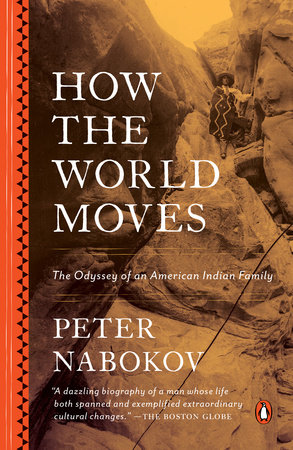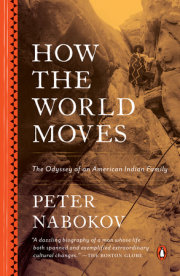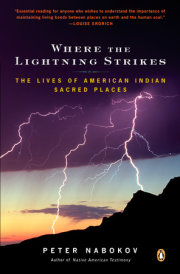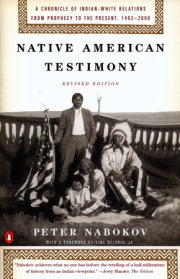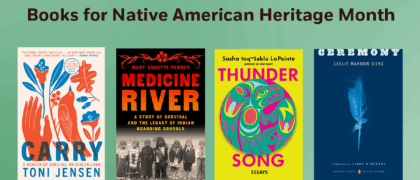THIS IS THE STORY of a man who told a story. It was nothing less than his version of his people’s account of the creation of the world and the beginning of their history, their equivalent of the Old Testament, the Epic of Gilgamesh, the Upanishads, or the Koran. Commonly told orally and in separate episodes depending on the traditional occasion, here for the first time it was on paper and of a piece. Although his version proved one of the most complete examples from Native America of the most important narrative that any society can tell itself about itself, it was published anonymously. Until recently no one knew the narrator’s name. How it took a lifetime for this man to experience and string together this epic, its fate as a publication out in the world, the banishment that he and his family endured for being themselves and sharing such information, and their subsequent adventures and struggles for survival throughout the twentieth century are this book’s story.
Edward Proctor Hunt was born in 1861 in the mesa-top village of Acoma Pueblo in western New Mexico—said to be the oldest continuously inhabited community in North America. But that was his Anglo-American name, which he discovered in a donated Bible that he received in an Albuquerque boarding school. Back at home he was known as Day Break, the identity he received when he was presented to the rising sun at the age of four days. Later he would acquire a third name, Chief Big Snake, when he performed with his family in the guise of Plains Indians on stages, in school auditoriums, and in circus arenas around the country and across Europe. Shortly after returning from Europe in 1928, he and his family stayed in Washington, D.C., where he put together the Acoma creation story for scholars at the Smithsonian Institution.
That story told of the emergence of two sisters out of the earth—one becoming the “Mother of all Indians.” Hunt described the arrival of the first human beings, the incremental creation of their ecology, and established them in their high desert landscape. He related the making of their first, archetypal village, with its traditional spaces for human life, work, and ceremony. All the while he introduced their lessons for the proper conduct of social, political, and religious life. He narrated their promising and tragic experiences thereafter, as they worked through their conflicts with their guiding supernatural spirits. Finally he set his people on a migratory journey through mishaps and dramas that ultimately brought them to their present homeland.
After this telling, in estrangement from his tribe, Edward and his family learned to become self-sufficient citizens as they wove and dodged their way throughout the upheavals of a modernizing America. This book also traces the growth of Acoma as one of the world’s distinct cultures and New Mexico’s evolution as a multicultural state within which Edward was first a hunter, farmer, trainee as medicine man and sacred clown, and then a controversial storekeeper, culture broker, ardent Protestant, government translator, brother-in-law to a “Jewish Indian Chief,” and convert to the American dream. Finally it lays his family’s multigenerational story within the changing contexts of Indian-white relations from the time of Anglo arrival in the Southwest to the beginning of the twenty-first century.
Edward’s life span also covered the period of the greatest displacement of indigenous peoples in world history. During this time many millions of tribespeople and peasant villagers were thrown on the road, uprooted by war, famine, greed, genocide, or extreme prejudice. The story behind the Hunt family’s hegira is akin to that of refugees in general who must face anguishing decisions about staying put or reaching out for more survivable and successful futures. Many strike hard bargains between tradition and progress and wind up fending for themselves through all manner of diasporas, both external and internal. Their stories are a defining aspect of our human experience, as thousands of premodern communities produced postmodern families like the Hunts.
• • •
Although Edward Hunt never lived in his birthplace again, through thenarratives he shared on the third floor of the Smithsonian’s red-stonecastlehe returned to it in memory and spirit and paid it a high honor. Amongthe seventy or so songs that he regarded as integral accompaniments to hisstory, and that were recorded for the Smithsonian’s sound archives, weresome whose function was to rekindle, in words and incantations, same magical forces that brought to life each element in the world’s creation before the dawn of time.
One of them, Edward explained, was chanted by the “Mother of all Indians” herself. She sang it to instruct her Acoma Pueblo children about “the world and how it works” and their place in it. Edward called the song “How the World Moves.” His son Wilbert offered this translation:
Some time ago, some time ago,
The earth, to be respected, was born.
Some time ago, the sky, to be respected, was born.
Some time ago, to be healthy, this earth was born with corn pollen.
Some time ago, to be healthy, this sky was born with turquoise color.
The earth’s motion, the sky’s motion,
Goes from north to west.
Look. The earth’s motion, the sky’s motion,
Goes from south to east.
Look around at the earth’s motion, the sky’s motion.
This all happened some time ago.
In the story that Edward told, the song’s counterclockwise circuit reflected the centripetal movement of the early Acoma migrants as they spiraled ever inward in search of their predestined homeland. But the life Edward and his family led took a clockwise, centrifugal turn and hurled them outward into the unknown—from their home mesa at Acoma to its satellite hamlet of Acomita to the pueblo of Santa Ana to the city of Albuquerque to the nations of Europe and back to New York and then the nation’s capital and Albuquerque again and finally, for at least one of them, back to the bosom of Acoma.
This book opens with the first movements of Edward Hunt’s life, in the middle of winter on the large rock that his people still consider the pivot of the universe.
. All rights reserved. No part of this excerpt may be reproduced or reprinted without permission in writing from the publisher.

